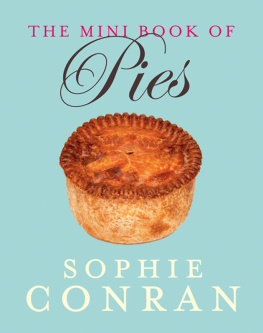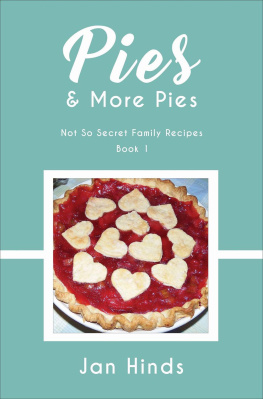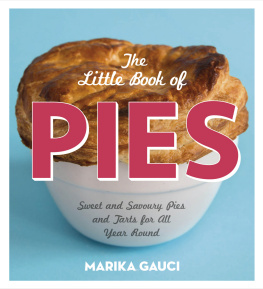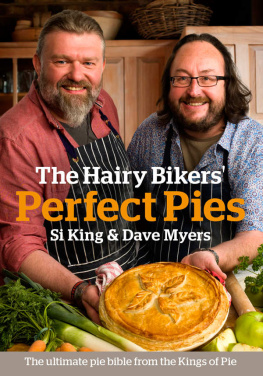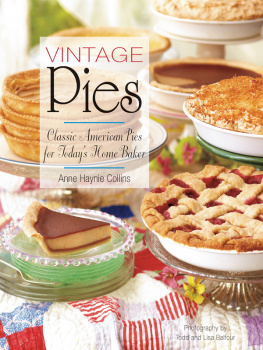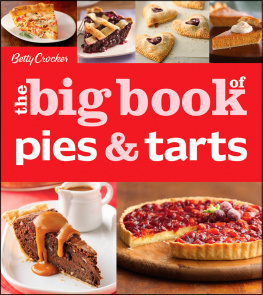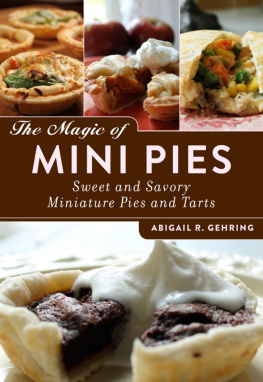Sophie Conran - The Mini Book of Pies
Here you can read online Sophie Conran - The Mini Book of Pies full text of the book (entire story) in english for free. Download pdf and epub, get meaning, cover and reviews about this ebook. year: 2013, publisher: HarperCollins Publishers, genre: Home and family. Description of the work, (preface) as well as reviews are available. Best literature library LitArk.com created for fans of good reading and offers a wide selection of genres:
Romance novel
Science fiction
Adventure
Detective
Science
History
Home and family
Prose
Art
Politics
Computer
Non-fiction
Religion
Business
Children
Humor
Choose a favorite category and find really read worthwhile books. Enjoy immersion in the world of imagination, feel the emotions of the characters or learn something new for yourself, make an fascinating discovery.
- Book:The Mini Book of Pies
- Author:
- Publisher:HarperCollins Publishers
- Genre:
- Year:2013
- Rating:4 / 5
- Favourites:Add to favourites
- Your mark:
- 80
- 1
- 2
- 3
- 4
- 5
The Mini Book of Pies: summary, description and annotation
We offer to read an annotation, description, summary or preface (depends on what the author of the book "The Mini Book of Pies" wrote himself). If you haven't found the necessary information about the book — write in the comments, we will try to find it.
The Mini Book of Pies — read online for free the complete book (whole text) full work
Below is the text of the book, divided by pages. System saving the place of the last page read, allows you to conveniently read the book "The Mini Book of Pies" online for free, without having to search again every time where you left off. Put a bookmark, and you can go to the page where you finished reading at any time.
Font size:
Interval:
Bookmark:
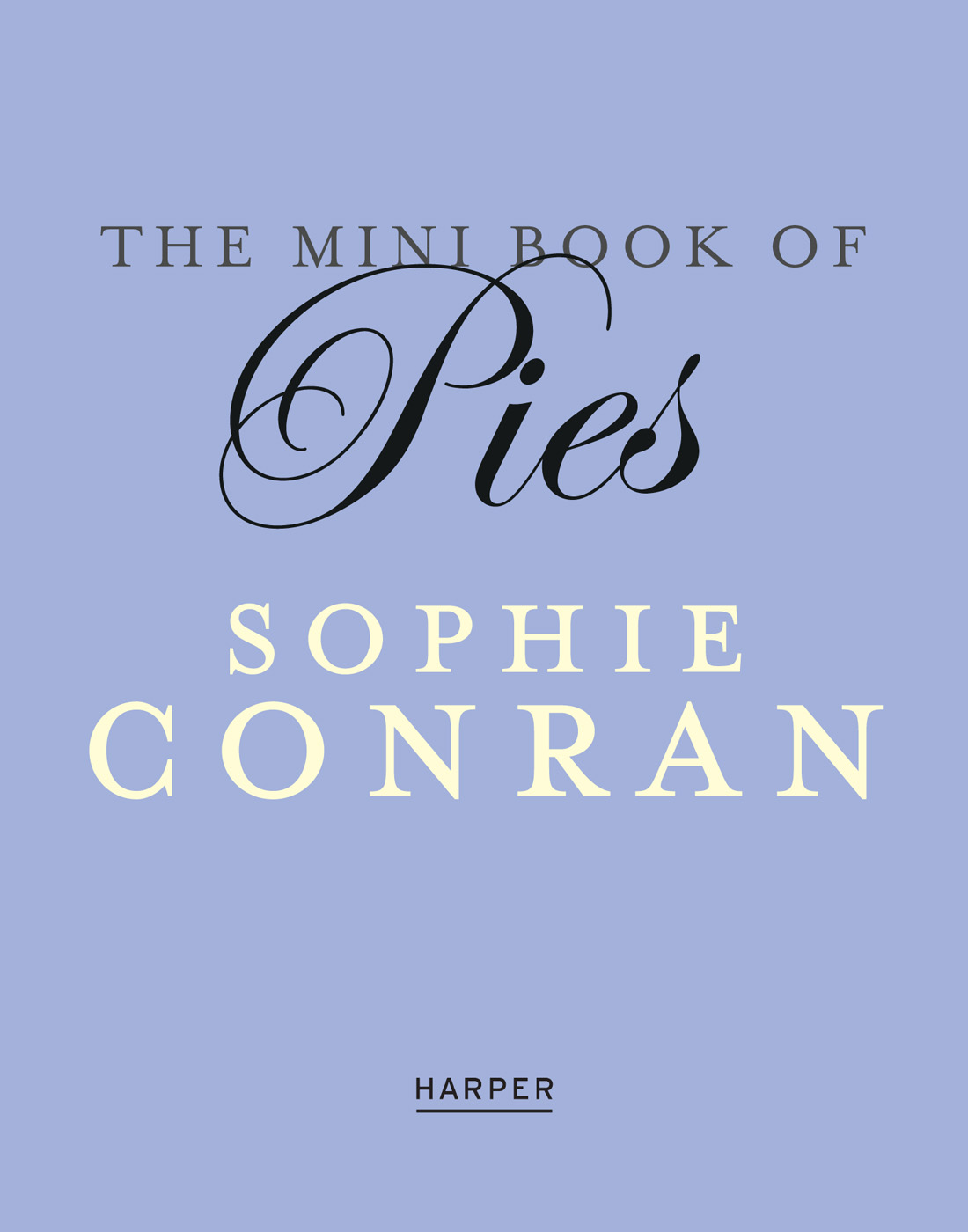
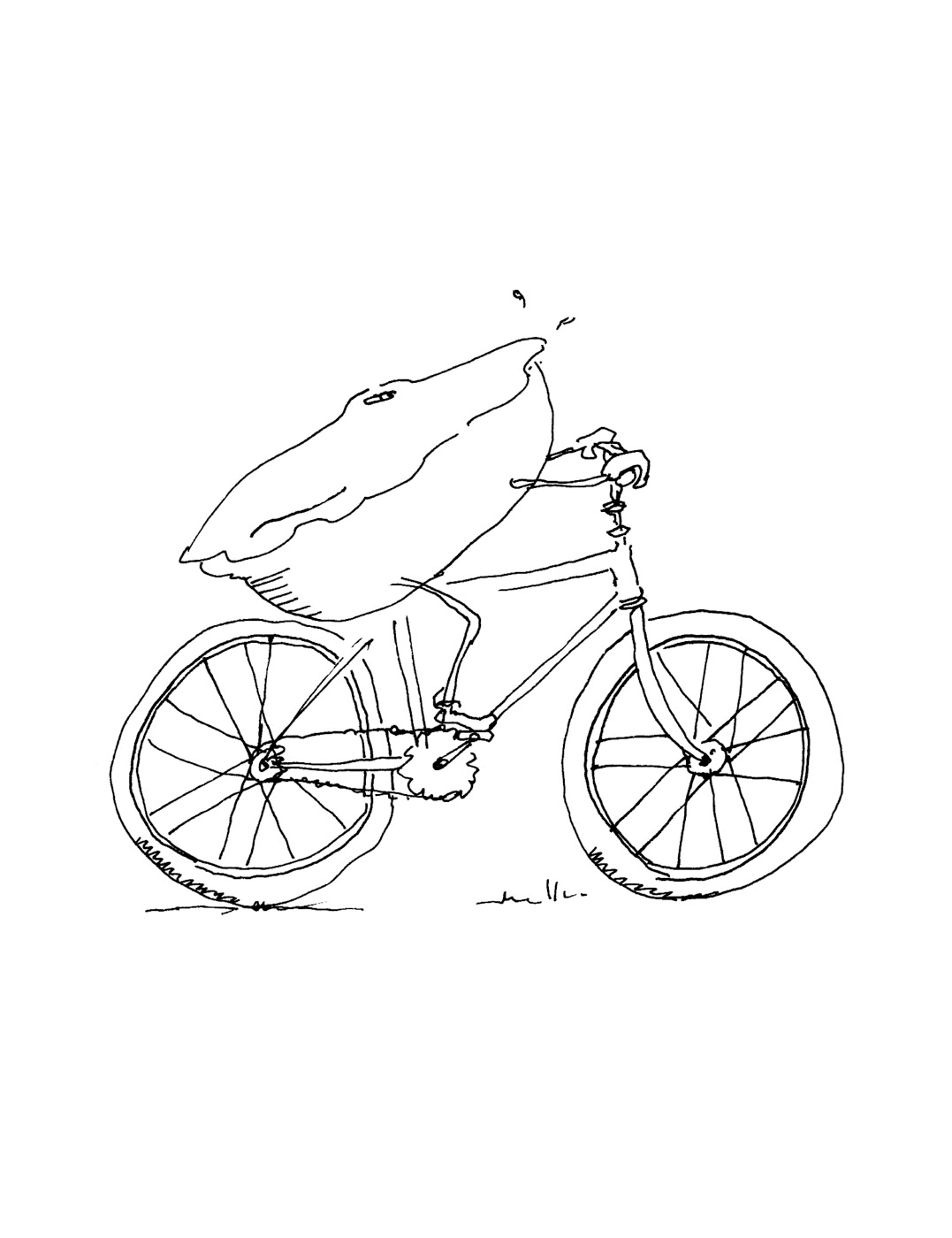
This edition first published in 2013 by HarperNonFiction.
This book includes recipes and images first published in Pies by Sophie Conran, 2006.
HarperCollinsPublishers
7785 Fulham Palace Road
London W6 8JB
www.harpercollins.co.uk
Text Sophie Conran 2006
Photography David Loftus 2006
Design: Maru Studio
Editor: Alastair Laing
Food Stylist: Julian Biggs
Prop Stylist: Sophie Conran
Sophie Conran asserts the moral right to be identified as the author of this work.
All rights reserved under International and Pan-American Copyright Conventions. By payment of the required fees, you have been granted the non-exclusive, non-transferable right to access and read the text of this ebook on-screen. No part of this text may be reproduced, transmitted, down-loaded, decompiled, reverse engineered, or stored in or introduced into any information storage and retrieval system, in any form or by any means, whether electronic or mechanical, now known or hereinafter invented, without the express written permission of HarperCollins. The author asserts the moral right to be identified as the author of this work.
A catalogue record for this book is available from the British Library.
Find out about HarperCollins and the environment at www.harpercollins.co.uk/green
Source ISBN: 9780007498710
Ebook Edition SEPTEMBER 2013 ISBN: 9780007498727
Version 1.0

To my little guinea pigs,
Felix and Coco
Love Mummy
What is a pie? Sounds like a simple question, but over the years pies have been and still are many varied things, so for a definition Id say the looser the better. Pies can be savoury or sweet, enclosed or open, with pastry or not, the right way up or even upside down. Pies helpfully are often called a pie, but sometimes its a pasty, a quiche, pudding, tart or even a cake.
Big or small, pies are wonderfully difficult to define. The term pie is used to describe dishes that arent pies at all but confections, and their adjunct can describe their filling or not. An Eskimo pie is my favourite offender, being neither a pie nor containing a single shred of Eskimo. It is, in fact, an oblong of ice cream covered in chocolate. So, in keeping with the rebellious nature of pies everywhere, Ive sneaked some controversial ones into this book!
Pies have been the food of kings and of paupers, eaten at extravagant banquets or taken down Cornish tin mines (the origin of the pasty), and there was a time when the streets of every town across the land would have been filled with the shouts of pie sellers. Yet in recent years the reputation of pies has suffered greatly in the public imagination, largely due to the many food crimes committed in its name. Pies have become associated with unhealthy, mass-produced snacks made from the otherwise unwanted parts of animals: the gristly and knobbly bits, encased in a tasteless, processed shell that coats your mouth in fat. But a pie is only as good as the quality of its ingredients, and happily there now seems to be a pie renaissance underway with lots of new companies producing fabulous pies, baking only the best fillings under the lid.
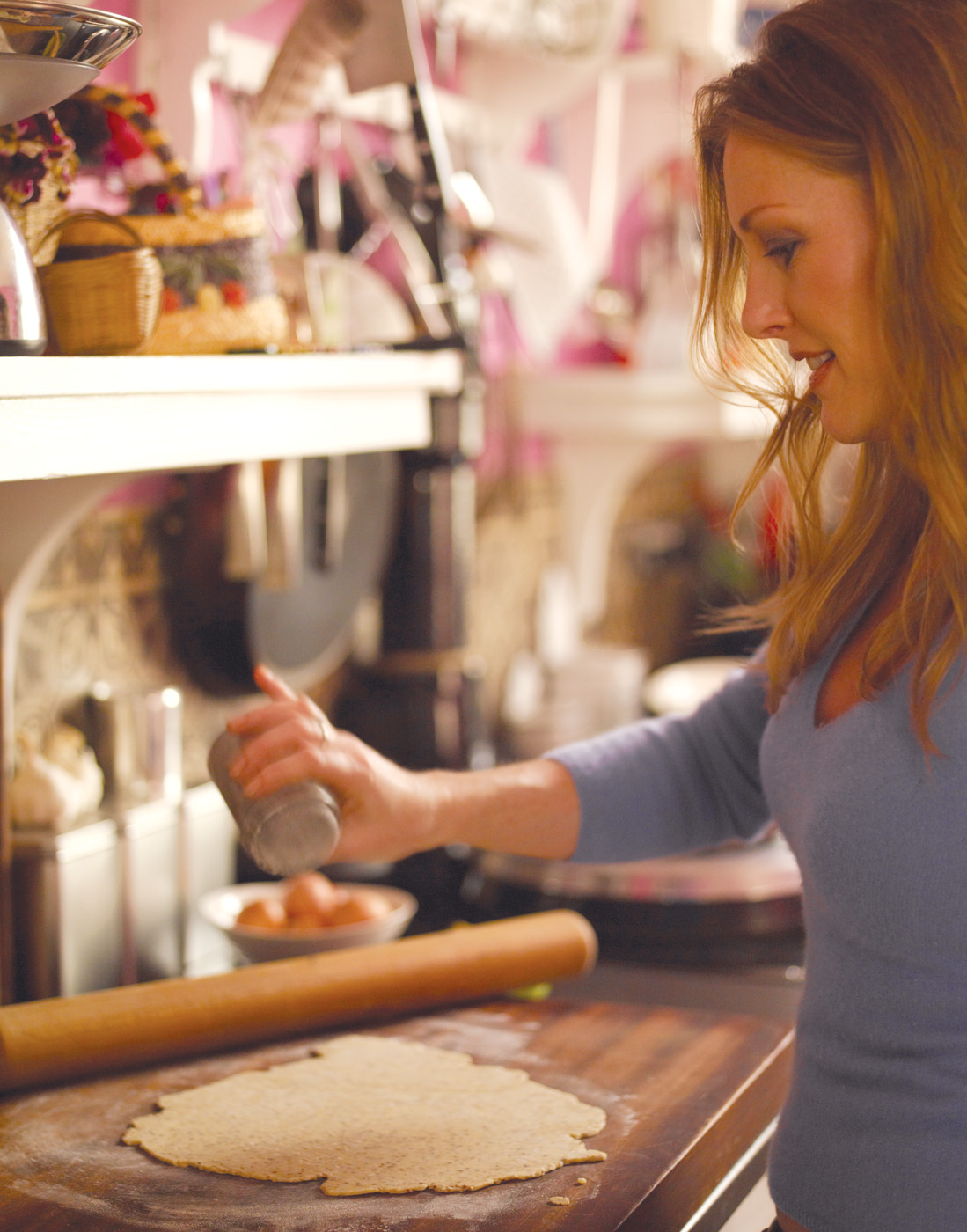
Pies are great for entertaining, as they can be prepared days in advance and make a fabulous centrepiece. They are also a great way of using up leftovers, transforming them from yesterdays roast into steaming loveliness. And they freeze well too. Regardless of calorie count, I cannot think of anything so wholesome and nurturing for children, so comforting as a treat or so perfect for a big occasion as a well-made pie.
Pies are very social dishes and for this reason I have included numerous recipes written by family and friends. They are all about sharing and as such encapsulate some of the greatest joys in life. A pie makes an excellent gift. You will be very popular with friends if you bring one along when staying for the weekend (one less meal for your host to cook). During the days and nights of writing this book I have cooked hundreds of pies, baking on average about three different flavours a day. My kitchen has been groaning with pies and being the offspring of two war babies I loathe waste, so every visitor or person I have visited has had at least one pie pressed upon them. I can often been found with a pie in the bottom of my handbag, just in case I see a hungry-looking friend. They have always been delighted to receive it.
I hope you enjoy cooking from this book, getting it dirty, splattering it with ingredients. I hope you enjoy the smells, the sound of gentle bubbling, the peace of mixing and rolling the pastry, the excitement of fetching a pie from the oven. But most of all I hope you enjoy sharing the results of your labours with those that you love.
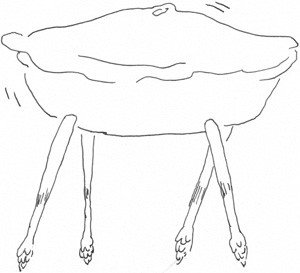
Pastry is as easy as pie. It really is a doddle. Its just a simple mixture of flour, fat and liquid to bind.
Use a nice fine flour; the best you can lay your mitts on. I like to use natural fats in my pastry, avoiding anything containing hydrogenated vegetable fats such as margarine and some shortenings. Admittedly, these do make pastry easier to work with, as they melt at a higher temperature and dont become as oily, but theyre difficult to digest and I personally think they taste foul. Butter and suet, on the other hand, are whole foods. The body recognises them and can digest them easily. I use butter for shortcrust pastry, which makes a wonderful, light, biscuit-like pastry. Suet makes a pastry thats really easy to handle. Ive found it holds its shape best too as it does not shrink or crumble. If youre a novice, try a suet crust as it is pretty foolproof.
Pastry is usually made up of approximately two-thirds flour, one-third fat and enough liquid to bind it. The quantities you will need may vary as may the type of flour, fat or liquid used. Have a play. You can also add any flavour you like: spices, cheese, herbs, horseradish, mustard (English mustard powder is great mixed into a cheesy pastry; grainy mustard adds a great texture), and even vegetables or bacon can be added to savoury pastry, just like bread. For sweet pastries, try sugar, honey, spices like vanilla, cinnamon or nutmeg, rosewater, dried fruit or herbs such as lavender and even crystallised petals. Let your imagination be your guide, but make sure what you add complements the filling and enhances the flavour. When adding an extra ingredient, be mindful of the consistency of the pastry some ingredients can dry it out, while others make it too sticky. This can be fixed by adding either a little flour or a little liquid.
Stay chilled
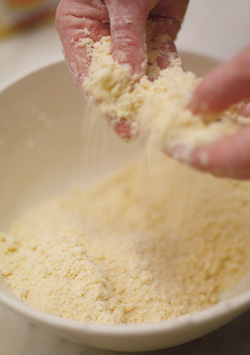
Keeping everything as cold as possible (including bowls, hands and ingredients) makes for the best pastry. That said, I have a warm kitchen and warm hands, supposedly two of pastrys biggest enemies, but I still manage to make perfectly decent pastry. Some people suggest putting everything in the fridge for an hour before starting. If the fat becomes too warm it will melt and be absorbed into the flour too much, which prevents the flour from absorbing enough water, and the result is pastry thats too crumbly and difficult to roll. This is particularly the case if you are working with a pastry with a high fat content, like puff pastry.
Next pageFont size:
Interval:
Bookmark:
Similar books «The Mini Book of Pies»
Look at similar books to The Mini Book of Pies. We have selected literature similar in name and meaning in the hope of providing readers with more options to find new, interesting, not yet read works.
Discussion, reviews of the book The Mini Book of Pies and just readers' own opinions. Leave your comments, write what you think about the work, its meaning or the main characters. Specify what exactly you liked and what you didn't like, and why you think so.

